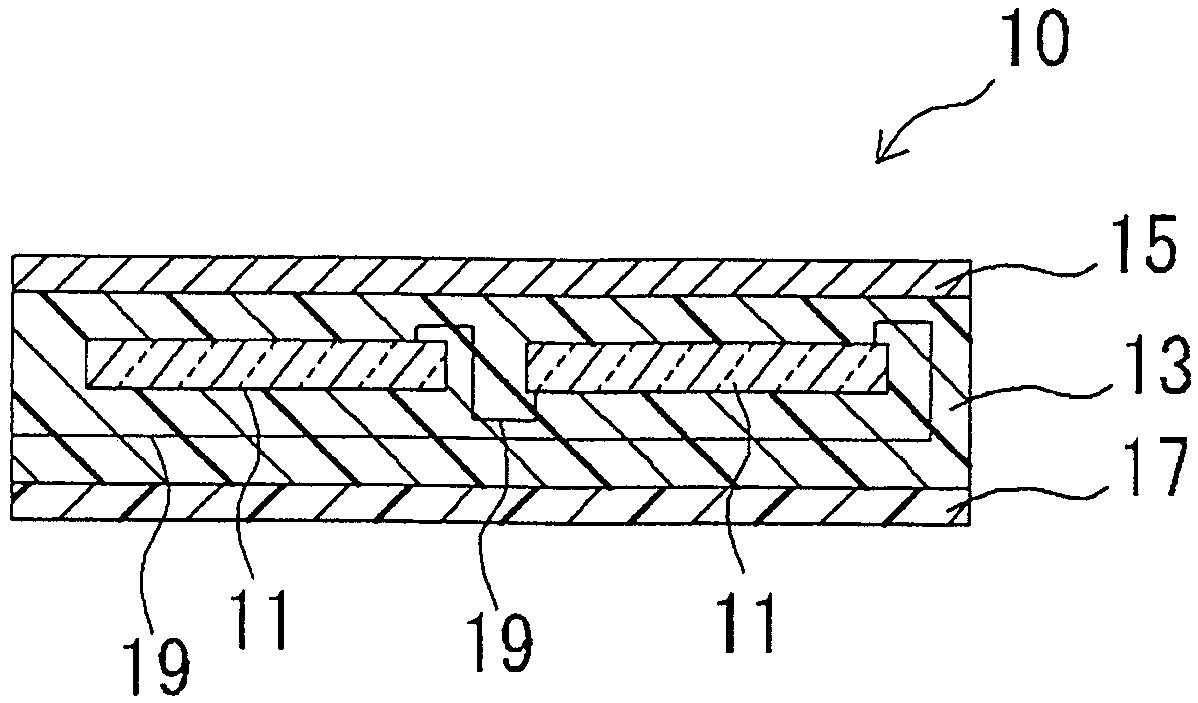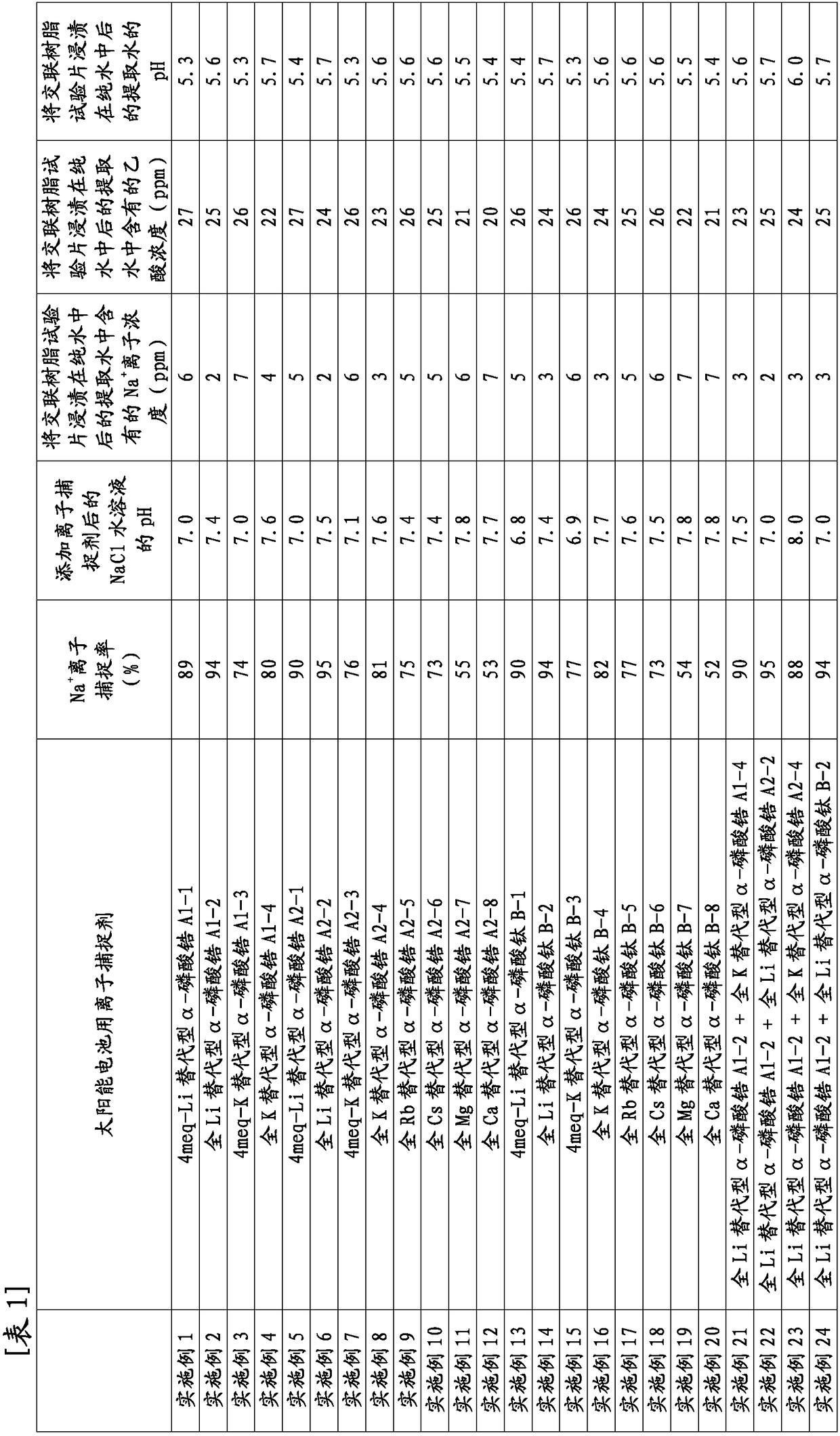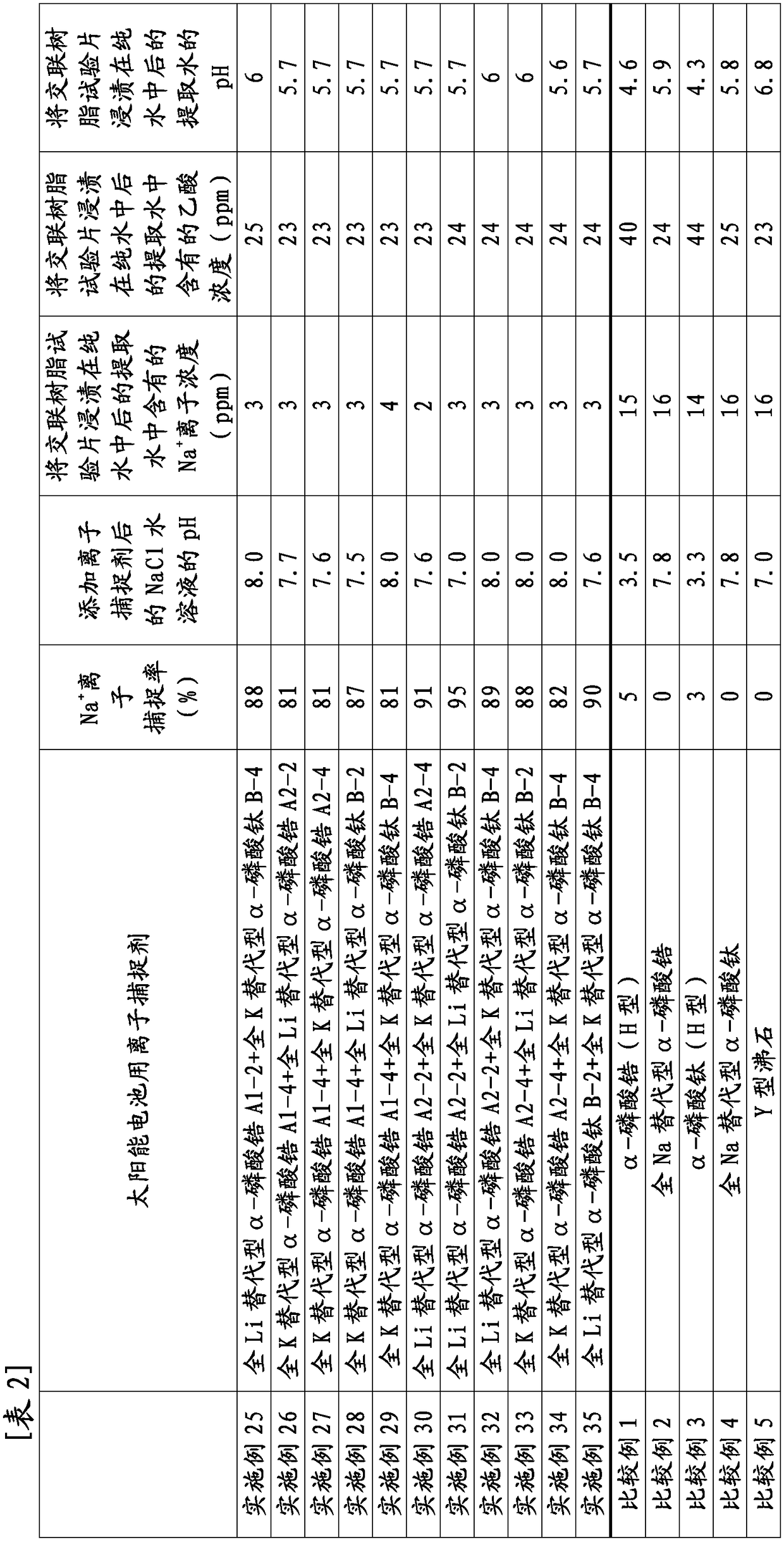Ion scavenger for solar cell, solar cell sealant composition containing same, and solar cell module
A technology of solar cells and ion scavengers, applied in phosphorus compounds, circuits, photovoltaic power generation, etc., can solve the problems of insufficient, bad effect of sealing resin, and corrosion of solar cell components, and achieves the reduction of output and the inhibition of corrosion. Effect
- Summary
- Abstract
- Description
- Claims
- Application Information
AI Technical Summary
Problems solved by technology
Method used
Image
Examples
Embodiment 1
[0122] After dissolving 0.272 mol of zirconium oxychloride octahydrate in 850 mL of pure water, 0.788 mol of oxalic acid dihydrate was added and dissolved. While stirring this aqueous solution, 0.57 mol of phosphoric acid was added. Stirring this, it refluxed at 103 degreeC for 8 hours. After cooling, the obtained precipitate was sufficiently washed with water, and then dried at 150°C to obtain a scaly powder composed of zirconium phosphate. As a result of analyzing this zirconium phosphate, it was confirmed that it was α-zirconium phosphate (H type) (hereinafter referred to as "α-zirconium phosphate (Z1)").
[0123] The above-mentioned α-zirconium phosphate (Z1) was boiled and dissolved in nitric acid to which hydrofluoric acid was added, and then subjected to ICP emission spectroscopic analysis to obtain the following composition formula.
[0124] ZrH 2.03 (PO 4 ) 2.01 0.05H 2 o
[0125] Moreover, when the median diameter of (alpha)-zirconium phosphate (Z1) was measur...
Embodiment 2
[0129] Except that the amount of 0.1N-LiOH aqueous solution used was set to 2500 mL, the same operation as in Example 1 was carried out to manufacture ZrLi in which all cation exchange groups (cation exchange capacity: 6.7 meq / g) were replaced by lithium ions. 2.03 (PO 4 ) 2.01 0.05H 2 Lithium ion substituted α-zirconium phosphate composed of O. The moisture content was 0.3%. Hereinafter, it will be referred to as "all Li substitution type α-zirconium phosphate A1-2".
[0130] Next, the above-mentioned various evaluations were performed using the ion scavenger for solar cells containing this all-Li substituted type α-zirconium phosphate A1-2, and the results are shown in Table 1.
Embodiment 3
[0132] Instead of 0.1N-LiOH aqueous solution, use 0.1N-KOH aqueous solution, in addition, carry out the operation similar to Example 1, manufacture by ZrK 1.03 h 1.00 (PO 4 ) 2.01 0.03H 2 Potassium-substituted α-zirconium phosphate composed of O. The moisture content was 0.5%. This potassium-substituted α-zirconium phosphate is α-zirconium phosphate in which 4 meq / g of the total cation exchange capacity is substituted with lithium ions. Hereinafter, it will be referred to as "4meq-K substitution type α-zirconium phosphate A1-3".
[0133] Next, the above-mentioned various evaluations were performed using the ion scavenger for solar cells containing this 4meq-K substitution-type α-zirconium phosphate A1-3, and the results are shown in Table 1.
PUM
| Property | Measurement | Unit |
|---|---|---|
| Median diameter | aaaaa | aaaaa |
| Median diameter | aaaaa | aaaaa |
| Median diameter | aaaaa | aaaaa |
Abstract
Description
Claims
Application Information
 Login to View More
Login to View More - R&D
- Intellectual Property
- Life Sciences
- Materials
- Tech Scout
- Unparalleled Data Quality
- Higher Quality Content
- 60% Fewer Hallucinations
Browse by: Latest US Patents, China's latest patents, Technical Efficacy Thesaurus, Application Domain, Technology Topic, Popular Technical Reports.
© 2025 PatSnap. All rights reserved.Legal|Privacy policy|Modern Slavery Act Transparency Statement|Sitemap|About US| Contact US: help@patsnap.com



